25 Years of the McLaren Award 2000-2004
One thing that the majority of the McLaren shorts share, perhaps due to the form they are presented in, is their timeless nature. Some techniques and styles change through time but the nature of these shorts still pack the same punch as they did the day they were released. Like McLarens work, you really feel like you’re watching something new when you see it for the first time. It may be the first time animation hit you with a certain emotion, the first time you saw a particular technique being used, the first time you appreciated an aspect of film, the McLaren award seems to be attracted to innovation. it is hard to believe that the films in this section are all over a decade old mainly due to their timeless nature.
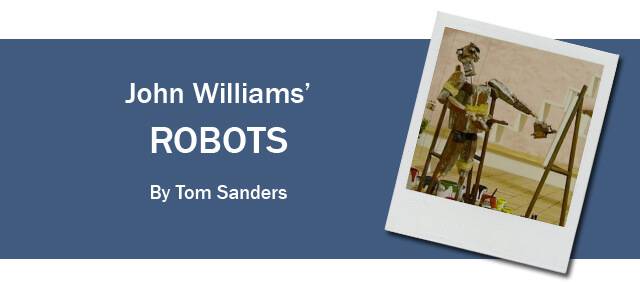 There’s nothing better than a satirical, dry humoured British film and even better when it’s animated. John William’s ticks all these boxes in his multi-award winning film Robots. The film centres itself around the lives of three, down on their luck, robots as they attempt to bring meaning to their empty lives.
There’s nothing better than a satirical, dry humoured British film and even better when it’s animated. John William’s ticks all these boxes in his multi-award winning film Robots. The film centres itself around the lives of three, down on their luck, robots as they attempt to bring meaning to their empty lives.
Jackson an artist, Roland a composer and Hands a would be super champ are struggling to fulfil their dreams in the vague hope of success. Billed as a docu-soap we explore each of the characters individually as they hopelessly go about completing their goals. The clever narration by David Hopewell really sets the tone and its the sarcasm, dry wit and celebrated comic timing that make this a film you can re-watch endlessly, picking up on different nuances and mannerisms everytime. A casing example comes during Hands’ introduction. We find out that he has lost the use of his legs but ‘he’s established a way to remain mobile, while maintaing his dignity’, at which point we see him saddled in a shopping trolley pushing himself along with a stick. British sarcasm is the crowning glory within Robots and balances the often simple and quite slapstick visual comedy perfectly. The dry wit and general lack of enthusiasm within the narrators tone make the robots seem even more bound to failure. Many of the jokes and essence of the film comes from the fact that they are robots. The dead pan eyes, the mindless-ness and mechanicals movements portray them as hopeless, yet somehow programmed to succeed.
Robots is a perfect example of British humour at its best and a great satirical look at the noughties fad of personal documentaries. We never feel too attached to the three characters even on their brink of failure but this seems purposeful. Humour constantly moves us away from feeling too attached, relishing us in the inanity and seemingly pointless lives of the Robots. A pure British tale of melancholy and redemption.
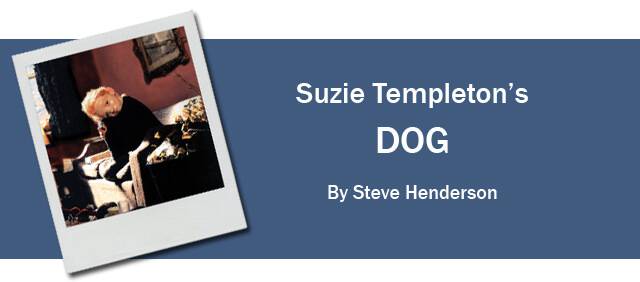 I remember the moment that animation changed for me completely, The year was 2002 and I was attending my first ever animation festival, the eager young college student I once was had been attending the festival for a couple of days and not much had changed. I’d seen a screen talk about Engy Benjy, I’d been to a Mr Bean the Animated Series storyboard meeting (with a young, bleached blonde Chris Butler) and nothing much had changed my perception, then I sat down for a screening which included Suzie Templeton’s R.C.A graduation film Dog and animation transformed from a cosy, fun little world of japes and sunbeams and transformed into a genre of film to a form on its own, capable of absolutely anything.
I remember the moment that animation changed for me completely, The year was 2002 and I was attending my first ever animation festival, the eager young college student I once was had been attending the festival for a couple of days and not much had changed. I’d seen a screen talk about Engy Benjy, I’d been to a Mr Bean the Animated Series storyboard meeting (with a young, bleached blonde Chris Butler) and nothing much had changed my perception, then I sat down for a screening which included Suzie Templeton’s R.C.A graduation film Dog and animation transformed from a cosy, fun little world of japes and sunbeams and transformed into a genre of film to a form on its own, capable of absolutely anything.
A grieving father and son, destitute and pulled apart by their mutual mourning for the missing mother try to get through the sorrow that has engulfed them. The empty pleasantries and hollow sentences the son receives from his dad allow this emotionally drained father to face his sons questions about the loss of his mother. The only comfort appears to be an elderly dog who’s health rapidly declines causing the agoraphobic father to kill the pooch. Unbeknownst to him, his son watches on. When the son is greeted by the same vague comforts from his father in the morning his innocent question and the films final line is enough to send an uneasy chill down anyones spine. Powerful would be an easy term to use to describe this film, but a much more accurate description would be helpless. not only are the characters in the film in a desperately helpless situation but the viewer experiences that very same helplessness as we witness the torment of the grieving process and the harrowing decline of the already dire situation. This film isn’t easy on the viewer but nobody said it had to be, animation is the illusion of life and we all know life doesn’t always go to plan.
The ability to not only tug at the heartstrings, but rip them out of your chest, throw them onto the floor and stamp on them is a fine art in its own right and perhaps something the general public don’t fully expect from animation but Templeton’s masterclass of misery was not only worthy of a McLaren award but also a demonstration of the true potential of animation, it can be as dark as it is often light and it can take you places you might not necessarily want to go.
Dog was the first time I had experienced anything on that level in animation, I had chills as I sat there in the cinema astounded at what I had just witnessed and animation, for the better, has never been the same for me since.
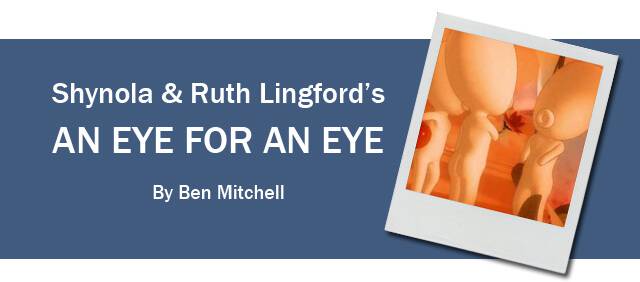 It’s no earth-shattering statement that music and animation frequently make good bedfellows – so frequently, in fact, that the animated music video is perhaps one of the more oversaturated sub-sections of the short film medium. As with all other shorts, there’s an extra degree of care and consideration required to make a video clip stand out amongst the rest and beg to not only have its message heard, but heard repeatedly, while not stepping on or over that of the song it’s crafted around. The near-melodrama of U.N.K.L.E.’s intense 2002 hit Eye For An Eye is aptly reinforced by Shynola’s frenetic (while strangely ethereal) animation depicting a strange civilisation under attack whilst remaining devotedly supplicant to an indeterminate, matriarchal ruler.
It’s no earth-shattering statement that music and animation frequently make good bedfellows – so frequently, in fact, that the animated music video is perhaps one of the more oversaturated sub-sections of the short film medium. As with all other shorts, there’s an extra degree of care and consideration required to make a video clip stand out amongst the rest and beg to not only have its message heard, but heard repeatedly, while not stepping on or over that of the song it’s crafted around. The near-melodrama of U.N.K.L.E.’s intense 2002 hit Eye For An Eye is aptly reinforced by Shynola’s frenetic (while strangely ethereal) animation depicting a strange civilisation under attack whilst remaining devotedly supplicant to an indeterminate, matriarchal ruler.
The project was co-directed by filmmaker and Harvard Animation Professor Ruth Lingford, marking her first (and only, to date) collabo ration with Shynola. Lingford, herself highly regarded as a director more than capable of dealing with strong adult themes and explorations of sexuality, may not have seemed an obvious choice for collaboration, but its her identifiably no-holds-barred visual approach (as previously demonstrated in work such as Pleasures of War) which gives this piece its edge. In an overview of Lingford’s work as part of Jayne Pilling’s Animating The Unconscious, fellow filmmaker Simon Pummell astutely cites the piece as achieving “a sense of contemporary social relevance not in balance with, but as an extension of the mythic, abstract and grotesque elements that Lingford has always employed in evoking sexuality”. Shortly thereafter Lingford would return with distinctly non-war themed sexual exploration piece Little Deaths, a quasi-documentary on the nature of intimacy itself.
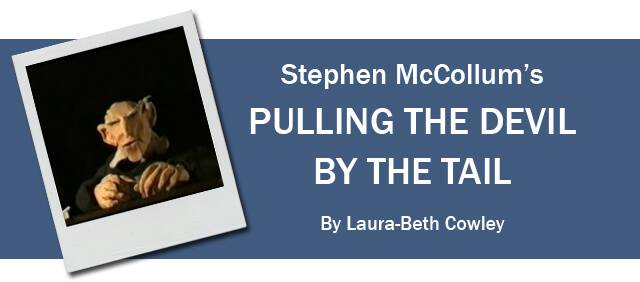 Stephen McCollum’s short clay animation is raw and funny; it cuts directly to the McCollum’s Irish roots and brings a common but dark folk tale to life. The short follows the band members of Stoisis – Puca, Frank and Ciaran (a real band that is completely voiced by McCollum himself), the adventure shows our unlikely, if slightly drunken heroes come face to face with the devil. As punishment for killing his pet goat he tells the band to play the best song he has heard or suffer eternal torture in hell. The use of clay animation in its simplest form here can be likened to many auteur animators including Lee Hardcastle (YouTube stop motion animator of T Is For Toilet) and Drew Roper of Yanimation studio’s early work such as Luke: The History Of Denim, all who have hit the scene later demonstrating the staying power for this style of film making.
Stephen McCollum’s short clay animation is raw and funny; it cuts directly to the McCollum’s Irish roots and brings a common but dark folk tale to life. The short follows the band members of Stoisis – Puca, Frank and Ciaran (a real band that is completely voiced by McCollum himself), the adventure shows our unlikely, if slightly drunken heroes come face to face with the devil. As punishment for killing his pet goat he tells the band to play the best song he has heard or suffer eternal torture in hell. The use of clay animation in its simplest form here can be likened to many auteur animators including Lee Hardcastle (YouTube stop motion animator of T Is For Toilet) and Drew Roper of Yanimation studio’s early work such as Luke: The History Of Denim, all who have hit the scene later demonstrating the staying power for this style of film making.
It was screened on RTE Telvision in December 2002 as part of the “Animated Ireland’ showcase. After winning the McLaren award in 2003, the film was developed into a short series with five further episodes all featuring the original cast and following them on further bizarre adventures.
Now part of the Narty Station on YouTube curated by Bill Hazzard, the small independent studio based in Donegal, Ireland. The troop creates a host of low–to-no budget punk projects including animation, film, and music.
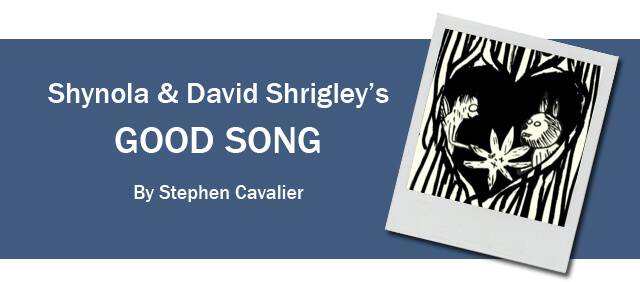 “It was in the air” was the modest response of a member of Shynola in a recent podcast interview when being credited for being the forerunners of the ‘lo-fi’ effect in CG animation in the early 2000’s. In the air it was indeed and Shynola were of course not alone in exploring this revolt against bright and shiny smoothly spinning perfection (fellow music promo directors Tim Hope and Michel Gondry would be two other names that spring to mind). Shynola though, with work like their retro psychedelic pixel funk (Junior Senior) and wireframe/hip hop/squirrel interface (Quannum) were certainly one of the flag bearers of this bedroom PC revolution, continuing the tradition of British lo-fi from such pre digital animators as Terry Gilliam, Bob Godfrey and Oliver Postgate, except this time with finely crafted animation.
“It was in the air” was the modest response of a member of Shynola in a recent podcast interview when being credited for being the forerunners of the ‘lo-fi’ effect in CG animation in the early 2000’s. In the air it was indeed and Shynola were of course not alone in exploring this revolt against bright and shiny smoothly spinning perfection (fellow music promo directors Tim Hope and Michel Gondry would be two other names that spring to mind). Shynola though, with work like their retro psychedelic pixel funk (Junior Senior) and wireframe/hip hop/squirrel interface (Quannum) were certainly one of the flag bearers of this bedroom PC revolution, continuing the tradition of British lo-fi from such pre digital animators as Terry Gilliam, Bob Godfrey and Oliver Postgate, except this time with finely crafted animation.
In terms of the art world at this time David Shrigley could be seen as another exponent of a kind of visual punk rock and so a collaboration of the two was in many ways a marriage made in scribbly pixelly lo fi heaven, especially as an accompaniment to Blur, currently exploring US grunge and rediscovering punky roots on their Think Tank album.
The video is pure Shrigley, with Shynola bringing to life his silly scuzzy surreal vision, the usual energetic colours abandoned in favour of the artists scratchy minimalism. A squirrel (a recurring theme?) falls in love with a lonely fairy, only to eat his head when imagining hazelnuts in the throws of passion. The squirrel is then beaten to death by angry fairies and insects and the last 30 seconds of the video is pure Shrigley daftness as a park keeper leisurely sucks stuff up with one of those hoover things park keepers leisurely suck stuff up with.
In contrast to most humourless life sucking contemporary music videos, the equivalent of a lobotomy via the eyes and ears, this one is definitely once seen never forgotten, and would surely be considered for any list of the greatest music promos. It can also be seen as a kind of precursor to Shrigley’s short film Who I Am And What I Want. Oh and I forgot to mention, it’s very funny.
On Shynolas facebook page is original pitch for this video, which starts with:
“details may change and we reserve the right to make a totally different video when you are not looking and as soon as the money is in our bank account”. Judging by the rest of the treatment they kind of did make a completely different video.
All in all, very funny and very punk rock and a reminder of the days when there was a music video industry that was interesting, exciting and fun.
25 Years Of The Mclaren Award Articles

